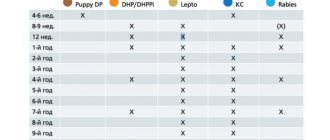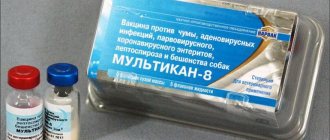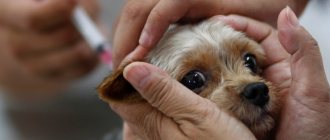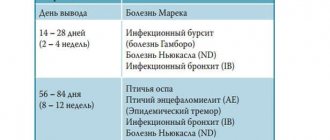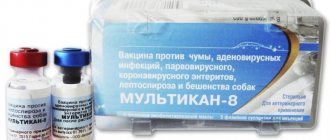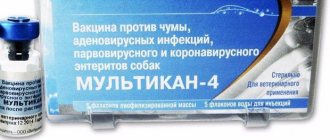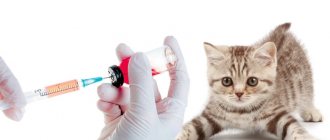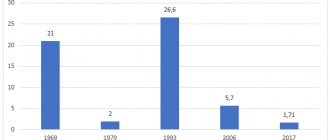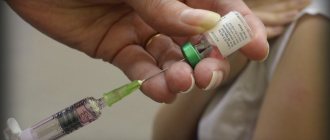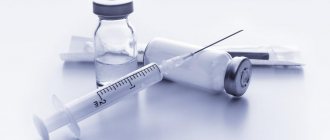INSTRUCTIONS for using the vaccine for dogs Nobivac DHPPi (Nobivac DHPPi)
COMPOSITION AND RELEASE FORM Nobivak DHPPi is a dry live vaccine against canine distemper, parvovirus enteritis, adenovirus infection and canine parainfluenza. Each dose of the vaccine contains attenuated strains: canine distemper virus (Onderstepoort strain) – at least 10 thousand CPE/50; canine parvovirus (strain C154) – at least 10 million CPD/50; adenovirus (strain Manhattan LPV3 serotype 2) – at least 10 thousand CPE/50; parainfluenza virus (Cornell strain) – at least 316 thousand CPE/50. The vaccine is a homogeneous dry porous mass of white color. The solvent used is a sterile phosphate-buffered solution Nobivac Diluent (pH 7.2 - 7.4) or one of the liquid vaccines: Nobivac RL, Nobivac Rabies, Nobivac Lepto. Packaged in 1 dose in glass bottles, packed in 10 pieces in cardboard boxes.
PHARMACOLOGICAL PROPERTIES The Nobivak DHPPi vaccine induces reliable protective immunity against canine distemper, parvovirus enteritis, adenovirus infection and canine parainfluenza 10 days after repeated vaccination. The Manhattan strain LPV3, serotype 2 induces immunity not only to this serotype, but also to serotype 1, which causes infectious hepatitis in dogs. The intensity of immunity is sufficient to ensure the animal’s protection against plague, parvovirus, adenovirus infections and parainfluenza of carnivores for 12 months after vaccination. The vaccine is harmless and areactogenic.
INDICATIONS The Nobivak DHPPi vaccine is prescribed to dogs for the prevention of canine distemper, infectious hepatitis, parvovirus enteritis and canine parainfluenza .
DOSES AND METHOD OF ADMINISTRATION The vaccine is vaccinated only in clinically healthy animals.
Dogs begin to be vaccinated at 8 weeks of age, with repeated vaccinations at 12 weeks of age. If earlier protection against canine distemper and parvovirus enteritis is necessary, the first vaccination can be carried out with the Nobivak Puppy DP vaccine at the age of 4 weeks, followed by re-vaccination with the Nobivak DHPPi vaccine according to the above scheme. Animals that have not previously been vaccinated and are older than the above age are vaccinated twice with an interval of 4 weeks. It is recommended to carry out a single annual revaccination.
Add 1 ml of diluent into the vaccine vial using a sterile syringe and mix thoroughly until a homogeneous suspension is formed. After dilution, the vaccine in one dose is administered to the animal subcutaneously or intramuscularly in compliance with the rules of asepsis and antiseptics. It is advisable to vaccinate all susceptible animals in the same room at the same time.
SIDE EFFECTS When administered subcutaneously, a slight swelling may form at the injection site, spontaneously disappearing within one to two weeks. Hypersensitivity reactions are possible in animals after using the vaccine; in this case, subcutaneous administration of adrenaline in recommended doses is indicated.
CONTRAINDICATIONS Hypersensitivity to vaccine components.
SPECIAL INSTRUCTIONS The vaccine can be used in dogs during pregnancy. It is recommended to shake the vaccine bottle before use. If the integrity of the vial is damaged or the specified expiration date has expired, the unused vaccine must be disinfected by boiling for 5 to 10 minutes.
STORAGE CONDITIONS The vaccine is stored and transported in a dry place, protected from light, at a temperature of 2 to 8 ºС. Freezing the vaccine is not allowed. Shelf life – 2 years.
MANUFACTURER Intervet International B.V. (Intervet International BV), Holland.
buy the Nobivac DHPPi vaccine at the veterinary pharmacy of the Kotofey veterinary clinic, the price must be clarified.
Vaccination for puppies "Nobivak": instructions for use
Manufacturer: Intervet, Holland.
The drug contains strains of viruses from the following diseases:
- Adenoviral hepatitis.
- Parvovirus enteritis.
- Rabies.
- Plague of carnivores.
- Leptospirosis.
Often these diseases can lead to the death of the animal. To protect your pet from infection, Dutch pharmacologists came up with the “Nobivak” vaccination for dogs.
Release form:
vaccine for puppies "Nobivak" is a dry porous consistency of a homogeneous white structure. The solution used is a phosphate-buffered diluent or one of the Nobivak liquid vaccines.
Pharmacological properties
: the viral strains included in the drug protect the animal from the causative agents of these diseases, increasing immunity. The effect of Nobivac begins 1.5 weeks after the second vaccination. The total duration of action of the medicine is 1 year. According to the manufacturer, Nobivak dog vaccines do not cause allergies and are absolutely safe.
Side effects
: Quite often, vaccination of puppies with Nobivak causes hypersensitivity in the animal, and is also accompanied by the appearance of swelling at the site of the subcutaneous injection. The swelling goes away on its own within 1-2 weeks, but sometimes veterinarians additionally administer adrenaline to reduce hypersensitivity.
Contraindications
Vaccinations with Nobivak should not be given to dogs with hypersensitivity to the components of the drug; vaccinations should not be given to sick or weakened animals. Nobivak is a safe drug; side effects and post-vaccination complications occur rarely. The medicine can be administered to dogs even during pregnancy, with the exception of anti-rabies drugs. The most common negative effect is swelling at the injection site, but it disappears on its own within 2 weeks.
To reduce the risk of allergic reactions, the animal should be given an antihistamine an hour before the procedure; if negative reactions occur, the veterinarian administers adrenaline. After vaccination, the dog should not be bathed for 14 days, since during this period the animal’s immunity is weakened and quarantine is required. Reactions to the vaccine can be different, some pets' behavior does not change, others become lethargic, sleep a lot, their appetite decreases, and sometimes they experience diarrhea. Almost always, unpleasant symptoms disappear on their own, but so as not to provoke complications in the form of colds. You should refrain from water procedures.
Damaged, unused vaccines must be boiled for 10 minutes, since they contain live strains, and then discarded.
Analogs
If the dog does not tolerate Nobivak well, you can choose foreign or domestic analogues - Eurikan, Hexadog, Dipentavak, Multikan.
Nobivak or Eurikan – which is better?
There is not much difference between the vaccines; they have almost identical composition and effectiveness. Adverse reactions occur rarely, and the cost is not much different. But all this is provided that Nobivak is of Dutch origin. The Russian analogue is cheaper, but most veterinarians and dog breeders do not speak very flatteringly about the medicine.
10 days before any vaccine is administered, the dog must be dewormed. Antiparasitic drugs should also be given before re-vaccination.
All dogs need to be vaccinated, even if they do not go outside, since many pathogenic microorganisms are highly resistant and survive well in the external environment. A person can bring dangerous viruses home on shoes or things, they will quickly find an owner, and the animal will get sick. The Nobivak vaccine protects pets from dangerous, severe, fatal diseases, but the dosage must be strictly observed.
Vaccines for dogs "Nobivak": varieties
One bottle of Nobivac does not contain components against all strains of the virus that it fights. Therefore, the Nobivak dog vaccine has several varieties:
- DHP - against canine distemper, viral hepatitis and parvovirus infection.
- Lepto – for leptospirosis.
- Rabies - for rabies.
- DHPPi – against parainfluenza and infections that DHP fights.
- RL – against rabies and leptospirosis.
- Puppy DP – vaccination for puppies “Nobivak” against distemper and parvovirus enteritis.
When and how to get vaccinated
Your dog can start receiving Nobivacom DHPPi vaccinations at the age of two months. Repeat vaccination of puppies according to the schedule specified in the instructions. If the dog is indicated for vaccination earlier, this can be done using the drug “Nobivak Puppy DP” after reaching four weeks of age. It is allowed to repeat the procedure according to the scheme prescribed in the instructions for use for dogs.
If the animal has not been vaccinated before or is older than the age indicated in the instructions, then it should be vaccinated twice and with a break of one month. Veterinarians recommend vaccinations every year.
Read about in what cases they give a dog “Bravecto”, “Ketofen”, “Vetom 1.1”, “Surolan”, “Propalin”, “Ivermek”, “Kaniquantel”, “Tylosin”, “Previcox”, “Ligfol”, “ Streptomycin", "Prazicide Plus", "Fungin", "Dexafort", "Ovariovit", "Imaverol", "Vitam".
To vaccinate your dog with Nobivak yourself, you need to take a sterile syringe and a jar of vaccine, into which you will inject a diluent with a syringe (in the size of one milliliter). Then the contents of the vessel should be shaken vigorously to form a homogeneous suspension. After you have diluted the contents of the injection, you need to inject it intramuscularly into the dog, following all the rules of disinfection. Veterinarians advise giving injections to overly susceptible animals at the same time and in the same office.
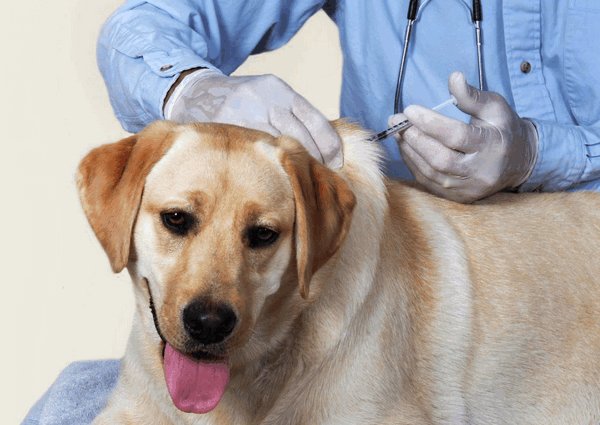
Did you know? "Nobivak DHP/DHPPi" is considered the world's first drug for puppies, which guarantees long-term immunity to the animal for three years.
Vaccination of a puppy "Nobivak": schemes
The DHP, DHPPi and Lepto vaccines are only indicated for completely healthy dogs 8-9 weeks old. At 12 weeks another vaccination is due.
Vaccination of puppies (Puppy DP) with Nobivak is recommended at 4-6 weeks. After 3 weeks they need to get a DHP or DHPPi shot. The puppy must be healthy and must be examined by a veterinarian before vaccination.
Vaccination of dogs against rabies with Nobivak is indicated at 12 weeks of age in the absence of contraindications. The effect of the drug is designed for 3 years.
The manufacturer recommends vaccinating puppies with Nobivak according to the schedule indicated below:
| Description of the drug | |
| Release form and storage conditions: | Vaccines in the form of a dry part (white or pinkish powder) and a liquid solvent (clear liquid), are packaged in glass ampoules; Shelf life of the powder is 24 months at a temperature of 2-8°C, shelf life of the solvent is 60 months at 2-25°C |
| Price: | 70-750 rubles per 1 dose (1 ml bottle) depending on the type of vaccine |
| Analogues: | Multikan, Geksakanivac, Dipentovak |
Basic recommendations for administering Nobivak vaccination
The vaccination regimen of this series is considered quite complex and time-consuming. First of all, vaccination of puppies should be carried out strictly according to age; based on this parameter, the veterinarian decides what type of drug should be administered to the pet.
- Dogs must be given an anthelmintic drug 3 weeks before vaccination; this is a prerequisite, because if the animal has helminths, the vaccination procedure will be useless. Since the injection has no effect on an animal infected with worms.
- Before vaccination, the dog must be examined by a veterinarian. Even minor discomfort should be a reason to postpone the injection until a more appropriate time. The dog should be in good spirits and have an excellent appetite.
- Puppies picked up on the street should not be vaccinated. First, the animal is quarantined and any contact with another pet is excluded. This necessary measure will help identify any disease. First, it is better to take a blood test from the “foundling” for the presence of antibodies, maybe he has already been vaccinated.
- It is better not to vaccinate dogs during the period when their baby teeth are changing; if the scheme suggests that due to age it is time to vaccinate, and her teeth are changing, then it is better to postpone the important procedure for a while. If puppies are subjected to tail and ear docking, then this procedure is best performed 3 weeks before the drug is administered.
- After vaccination, puppies must be protected from water, stress and hypothermia for about 10 days. It is also recommended not to overload your pet with physical activity.
- If dogs have a tendency to allergic reactions, then they must first be prepared with antihistamines. Since a sensitive animal may develop anaphylactic shock.
- There are cases when a sensitive animal develops an inflammatory process at the injection site, which should go away on its own after 3 days.
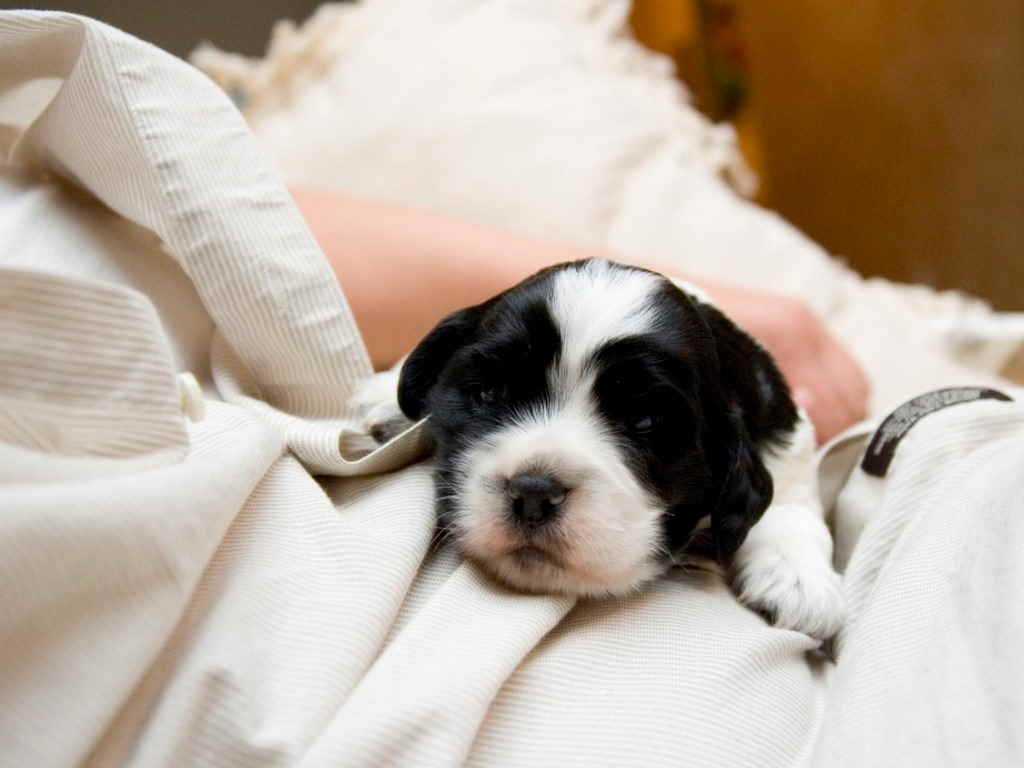
What is Nobivak used for?
Vaccination of animals against various diseases is the most reliable prevention. It helps to develop lasting immunity to those viruses, the consequences of infection of which can be fatal. The body is not able to overcome the infection of canine distemper or rabies on its own.
In some cases, dogs become dangerous to humans. Therefore, there are a number of vaccinations required for all pets. It is legally established that the owner takes responsibility not only for the health of the pet, but also for possible infected others.
The two main vaccines required to transport dogs across the border are:
- Vaccination against plague, parainfluenza, hepatitis, parvovirus enteritis;
- Rabies vaccination.
It is these injections that are given to the puppy and repeated annually. There are many vaccine strains in the Nobivak series of drugs; DHPPI (distemper, parainfluenza, hepatitis, enteritis) and Rabies (rabies) are intended for regular vaccination.
The following types are also distinguished:
- Lepto (leptospirosis, considered an add-on to DHPPI, mixed with the main vaccine);
- RL (rabies and leptospirosis, intended for revaccination);
- L4 (extended leptospirosis vaccine);
- PuppyDP (parvovirus enteritis and distemper);
- DHP (distemper, parvovirus enteritis, hepatitis);
- KC (parainfluenza and bordetellosis).
The drugs were developed in one Norwegian company - Intervet International B.V., which was founded in 1969. There is a branch of the Intervet organization in Russia; the Nobivak product was registered in 2014.
Restrictions (quarantine) after vaccination
So, the vaccination was successfully carried out. Now your pet will develop active immunity no earlier than in 10-12 days. During this period, the tailed animal’s body is slightly weakened, all its strength goes towards fighting viruses. Therefore, during this time, quarantine must be observed. Quarantine after vaccination lasts, as we said above, 14 days.
During this time, some restrictions should be observed:
- It is advisable for your four-legged dog not to have contact with other dogs for two weeks.
- The animal should be kept away from any stress.
- You should not bathe your dog.
- Avoid increased stress, overwork and hypothermia.
- Keep walking to a minimum.
- An adult animal should be walked with a muzzle, but puppies (if possible) should refrain from walking altogether.
- To travel outside of Russia, you must undergo quarantine for a period of 1 month after vaccination against rabies.
You can read in more detail about how to care for your dog after vaccination. Vaccination is a very responsible and mandatory event. Take it seriously.
Rabies affects the nervous system of animals, it is incurable and fatal. This is why vaccination of pets is so important. Quarantine after rabies vaccination in dogs also plays an important role.
You need to know about the rules associated with vaccination and caring for your dog after the procedure.
Nobivac DHPPI
This is a complex vaccine intended for vaccination and revaccination of dogs . It reliably protects your pet and contains inactive strains of canine distemper, infectious hepatitis, parainfluenza and parvovirus enteritis. Presented in the form of two ampoules: one of them contains a white or pinkish powder, and the second contains diluent (solvent).
The drug is used only for healthy animals and is safe for pregnant and postpartum females. The first vaccination is given at 8-9 weeks (from birth). Revaccination is carried out after 14 days . Subsequent repetitions depend on the breed and size of the pet. It is considered correct to vaccinate again at 6 and 12 months , and then annually . The average cost for one dose is 150 rubles ; together with the services of a veterinary clinic, vaccination will cost 400-500 rubles .
In order not to traumatize the pet’s psyche several times, Lepto against leptospirosis is administered along with this vaccine.
Why get vaccinated and is it necessary?
For many dog breeders, the question of the need for vaccinations remains a mystery. After all, animals in the wild can do without them and survive just fine.
And this is a big misconception:
- Firstly, dogs are already domesticated animals and their immunity is weaker than that of wild animals.
- Secondly, in the wild, the life expectancy of animals is much lower and they often die from infectious diseases.
- Well, thirdly, our favorite little animals do not live in the forest, where the danger of infection is much lower, but in a city where there is a lot of all kinds of chemical and natural waste, harmful emissions and other stuff. This means that the risk of getting infected in the city is much higher.
This is why the need for vaccination, in my opinion, is beyond any doubt. If the animal gets sick, the treatment will be very difficult and may even lead to the death of the dog. Therefore, it is better to vaccinate and prevent infection than to fight it.
Moreover, it is also necessary to vaccinate those animals that do not leave the apartment, since they can become infected even from their owner’s outdoor shoes or clothes.
Well, if you are going to take your animal with you when traveling by train or plane, then this question disappears altogether. Moreover, in the latter case, all vaccinations must be reflected in the veterinary passport and certified with the stamp of the state veterinary clinic.
Nobivac Rabies
A vaccine designed to protect a pet from rabies . It contains killed viruses grown in an artificial environment. It looks like a ready-made suspension of yellowish color. The solution is administered at 3-12 months for the first time and repeated every three years. Moreover, the effect begins after 3 weeks , and the drug works for up to 36 months . In particularly dangerous conditions (with a high incidence of disease in the region), annual vaccination is permitted.
Preparing your pet for vaccination
Preparation for vaccination with Nobivak depends on whether it is a puppy or an adult dog.
If an unvaccinated puppy comes into the house, we don’t waste time - parvovirus will not wait, just like canine distemper (everyone is used to calling it “distemper”) and other infectious diseases.
A decent breeder will always indicate at what point anthelmintic treatment was carried out. If about 13-14 days have passed after flea treatment, and no more than 9-10 days have passed after antihelminthic measures, the puppy can be vaccinated. If the deadlines are missed, antiparasitic treatment is carried out.
Flea drops are selected according to the age and weight of the baby in strict accordance with the recommendations on the packaging.
After carrying out the anti-flea manipulation, you need to give the puppy something anti-helminthic. After 5-7 days, observe the feces. If there are no worms, vaccination is carried out. If a helminthic infestation is detected, the vaccination is temporarily canceled - re-treatment is necessary. If after 4-5 days there is “silence” and no parasites are visible, you can go and get vaccinated.

It is much easier to prepare an adult dog - it is already vaccinated against many diseases. It’s not a big deal if the date is pushed back by a month for some reason; on average, the vaccine is designed to last for a longer period of 14 months.
Instructions for use
Puppies begin to be vaccinated at the age of 6-8 weeks , when they stop receiving maternal immunity through milk. During this period, the pet is prohibited from communicating with other animals and going outside. 2 weeks before vaccination, the pet (of any age) is dewormed (cleansed of internal parasites).
It is recommended to consult with the breeder and veterinarian to select the ideal vaccine and draw up a vaccination plan. Often, puppies are purchased already vaccinated, but the further vaccination schedule rests on the shoulders of the owner.
For the first time, you should go to the clinic, where the vaccination procedure will be carried out by experienced specialists who will monitor the animal’s reaction to the drug. 2 weeks after the first vaccination, the injection is repeated. The further plan is developed individually for each dog. It is important to observe quarantine after each procedure ( 14-22 days ) and revaccinate dogs annually.
Possible side effects
If all recommended measures are followed, side effects are extremely rare. Possible unwanted effects:
- Redness, itching, hair loss, swelling at the injection site. Local reaction to the administered drug. There is no need to smear it with anything, the lump will resolve within a month.
- Within 1-2 days after the procedure, many pets become lethargic and refuse to eat. This behavior is considered normal if it is not accompanied by vomiting and diarrhea.
- An acute allergic reaction is accompanied by loss of consciousness, the dog's face swells, and breathing quickens. This condition requires urgent veterinary attention.
Sometimes pets develop post-vaccination sarcoma. The only treatment for this pathology is surgical: removal of the tumor and nearby tissues. That is why doctors recommend vaccination in the pelvic limb area. Since in advanced cases, removing a tumor on the withers is extremely problematic.
Vaccination schedule with Nobivak
A specific regimen can be prescribed individually depending on the breed and size of the dog. The ideal option would be to vaccinate with several types of Nobivak vaccine as the puppy grows older. For the first year, a similar plan would be suitable:
- Puppy DP vaccination at 1.5-2 months (subcutaneous);
- Inoculate DHP and L4 together at 8 weeks (subcutaneous);
- At 3-6 months you need to repeat the vaccination and add a strain of rabies, Nobivak DHPPI and RL are suitable;
- The last vaccination is repeated annually; in favorable conditions, revaccination is allowed once every 2 years.
This scheme is an example of a grafting option. You can choose other Nobivak vaccines or products from another company; it is important that the puppy receives protection from all dangerous diseases.
Composition and pharmacological properties
Depending on the type of drug, the content of vaccine strains will be different. For the most part, the solutions are similar, but have detailed properties. Nobivak DHPPI is considered the most complex; using its example, you can consider the common components of all mixtures:
- Plague strain (4.0 LH);
- Adenovirus strain (4.0 LH);
- Parvovirus strain (7.0 LH);
- Parainfluenza strain (5.5 LH).
The solvent contains water for injection, phosphate buffer solution.
Similar inactive strains contain other vaccines, to which a strain of rabies and leptospirosis can be added.
Effect of the drug
Like all vaccines, Nobivak drugs are based on the work of inactive strains (samples of viral bodies), which are introduced into the animal’s body, but do not have sufficient strength to attack it. At this time, the dog's immune system studies microorganisms and “learns” to resist them. Thus, after infection with a live virus, antibodies will be able to protect the dog’s organ systems.
Depending on the type of vaccination, the duration of protection is 12-36 months. The drug begins to work within 12-15 days, this time is called quarantine.
Indications for use
Indications for the use of specific types of vaccines depend on their functional effects. The full range of vaccinations is carried out for preventive purposes, and not after infection. The manufacturer assures that its products will reliably protect pets from dangerous viral diseases.
- Rabies is the most dangerous and intractable disease that destroys the dog’s central nervous system. It is also dangerous for humans. An animal can become infected from wild animals after a bite or through close contact with other domestic animals. The route of transmission is from saliva to blood. Characteristic symptoms are photophobia, convulsions, and severe drooling.
- Parvovirus enteritis is a viral disease that destroys the intestines and, in some cases, the heart of an animal. Transmitted through the feces of infected animals. Causes severe acute poisoning, diarrhea, vomiting, and a cadaverous odor. If the cells of the cardiovascular system are destroyed, the pet breathes heavily.
- Infectious hepatitis or adenoviral enteritis affects the liver, intestines, lungs, stomach, and nervous system. Caused by a blood-borne virus. Vivid signs are anemia, yellowing of the whites of the eyes and mucous membranes, fever, convulsions.
- Carnivore distemper is not dangerous to humans, but is fatal to pets in the absence of high-quality, quick treatment. Symptoms directly depend on the affected area. An obvious virus is keratinization of the skin and scabs on the surface of the epidermis.
- Parainfluenza is an insidious disease; the virus targets the lungs, then the gastrointestinal system and blood vessels. Manifests itself in the form of severe nasal discharge, coughing, sneezing, shortness of breath, anemia, and thirst.
- Leptospirosis is a bacterial disease that affects the kidneys, liver and circulatory system. In severe cases, it kills the internal microflora of the stomach, gastrointestinal tract, and nervous system.
Why is vaccination important?
Vaccinations cannot be ignored. Only vaccination gives puppies a chance to survive distemper. The canine distemper virus attacks the nervous, lymphatic, digestive systems, and bone marrow of a small pet. The disease is characterized by a severe course: the mortality rate of puppies under 3 months of age from distemper is almost 100%.
Infection occurs through the digestive tract, then the virus quickly spreads through the bloodstream to all tissues. You can become infected from already infected animals, through care items, bowls, and bedding.
Weakened animals with low immunity primarily fall ill. Predisposing factors are also:
- poor living conditions;
- frequent colds;
- unbalanced diet;
- lack of vitamins and others.
With distemper, the incubation period lasts up to three weeks, and at this time the dogs are already contagious. The disease can appear suddenly: yesterday’s playful puppy today cannot get up from the litter, and the following are observed:
- high temperature - up to 40-41 degrees;
- refusal to eat;
- vomit;
- weakness, lethargy, fatigue;
- deterioration in the appearance of the coat.
A little later, the nervous system is affected, and convulsions may occur.
There are no specific cures for distemper; veterinarians prescribe symptomatic treatment and drugs to strengthen the immune system. Animals with high immunity have a higher chance of survival. Vaccinated puppies tolerate the disease much easier, without dangerous consequences.
Practice shows that in rare cases, vaccination against distemper is ineffective. There may be several reasons:
- deworming was not carried out before vaccination;
- the puppy is already infected with the virus, the disease is in the incubation period, and the vaccine provokes the development of the disease;
- a low-quality vaccine was used, so it is not recommended to vaccinate yourself.
Parvovirus enteritis affects only dogs; the disease is not typical for cats. The disease is acute; a pet that has been in contact with a sick animal or contaminated care items can become ill. Humans can also be a carrier of the virus.
Enteritis is characterized by an acute course, the disease develops rapidly: the incubation period lasts from several hours to several days. The virus primarily does not spare the digestive system: it destroys its mucous membrane, which causes vomiting, diarrhea and bleeding. Possible heart damage. The disease often ends in death.
Nobivak will not be able to completely protect animals from infection with parvoviruses, however, vaccinated animals tolerate the disease much more easily and have a good chance of recovery.
False rabies (Aujeszky's disease) has a high mortality rate. A dangerous virus can enter the body from a sick animal, common objects, or consumption of raw meat. A tenacious virus is destroyed only at a temperature of +100°C.
The disease is characterized by the following symptoms:
- first a decrease in appetite, then a complete refusal to eat;
- irritability, anxiety;
- severe itching;
- increased salivation.
Two days later, brain damage begins, paralysis of the larynx is observed, which leads to death. The dog “fades away” within 48 hours, leaving no opportunity for treatment. The only salvation can only be vaccination.
How to vaccinate a dog with Nobivac
You can vaccinate your pet yourself, provided you are fully aware of the rules of vaccination techniques. It is better to carry out the first procedure at a veterinary clinic to avoid problems with the acceptance of the vaccine. Two weeks before the injection, the pet is cleared of helminths. On the day of vaccination, you need to make sure that the dog is completely healthy. To do this, just measure the temperature.
Algorithm of actions for self-vaccination:
- The bottle with liquid content is heated in the hands and shaken; if you need to mix 2 components, then you need to sprinkle this amount of powder onto the solvent in accordance with the instructions;
- The resulting solution is drawn into a disposable thin syringe;
- Small pets are placed on a table or couch, held by the body or muzzle, large animals are seated between the legs and pinched with the knees;
- The desired area is NOT treated with alcohol or other antiseptics, because... disinfectants can inactivate the vaccine, rendering all actions useless;
- The drug is quickly injected with one click subcutaneously (to do this, the skin in the withers area is slightly pulled back) or into the thigh (only for Nobivak Rabies);
- Stickers from the bottles are placed in the veterinary passport, the bottles are boiled for several minutes, and then disposed of.
special instructions
The most important thing when vaccinating an animal is compliance with safety precautions and sterility of equipment (use of disposable syringes, needles). It is important that everyone in the room washes their hands and puts on special clothing . The surface on which the procedure is performed must be clean, disinfected with an alcohol solution or covered with a disposable diaper.
The use of the vaccine on people is prohibited . If the drug gets into the blood, you need to urgently go to the clinic. If liquid is spilled on the skin or mucous membranes (of both humans and animals), it is important to rinse the affected area with running water and monitor for a possible reaction.
It is necessary to have a first aid kit and first aid supplies so that it is possible to save the animal if allergic symptoms of not taking the drug appear.
Price of the Nobivak vaccine for dogs, where can I buy it?
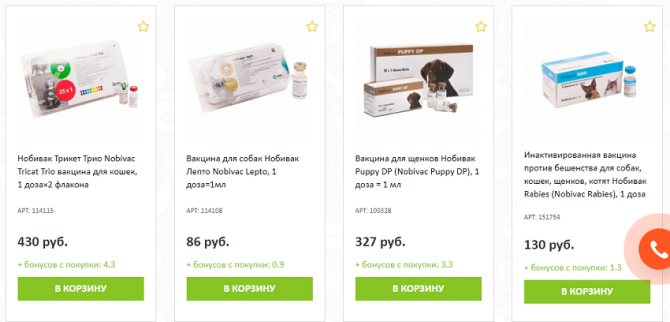
The vaccine for self-administration can only be purchased at a veterinary pharmacy. In the clinic, the drug is used only for vaccination directly by the doctor in the institution. Sale for home use is not provided.
Nobivak is a foreign vaccination for dogs, which is why its price is higher than its domestic counterparts.
On average, the price range for 1 bottle of Nobivac is as follows:
| Type of drug | Cost, rubles |
| Rabies. | 110 -160. |
| DHPPi. | 260-330. |
| Puppy DP. | 280-350. |
| R.L. | 190-270. |
| Lepto. | 75-150. |
The cost of vaccination in a veterinary clinic is much higher, because... includes an examination by a doctor and recording of all data in special journals.
Nobivak is a drug that will help protect your pet from viral diseases. If the vaccination schedule is followed correctly, the dog develops lasting immunity. The procedure must be carried out on all animals: puppies, elderly dogs and even those who are exclusively kept at home.
Video: what is Nobivak for dogs, instructions for its use and vaccination schedule
Preparation and use of the vaccine
It is better to do the injections for the first time not by yourself, but by the hands of a veterinarian. It will be much easier for him to calculate the correct dose according to weight. The doctor will also conduct an examination and determine whether the animal is healthy and whether its body is ready for such manipulation. This is also recommended due to a possible allergic reaction. In this case, a specialist will be able to help, but the owner may become confused and miss the moment when the symptoms can be stopped without problems.
But you can re-vaccinate yourself at home. If it is an injection, you need to learn how to inject your dog.

First, antiparasitic treatment is also carried out 10 days before the selected date. Otherwise just follow the instructions:
Open the container with the dry component;
1 ml of Diluent is poured into the bottle;
Close the container and shake well several times - the solution should be extremely homogeneous;
Draw the required amount of the composition into the syringe, remove excess air, change the needle to a sterile one;
The skin on the dog's withers is pulled back and a needle is inserted;
The dose is administered and the area is then massaged.
As for the type of CS, it is not at all difficult to give it to your pet, because it is not an injection. After dilution, the drug is instilled into the nostril with the nozzle that comes with the kit.
